Home »
Misc »
How to break a basketball press
How to break a basketball press
1-4 Press Break to Score on Any Full-Court Defense
There are many factors that go into winning and losing basketball games:
- Shooting
- Rebounding
- Free Throws
- Press Break Offense
However, at the high school level and below, I don’t think anything will lose a game faster or more frequently than a team’s inability to handle pressure.
We've probably all had teams that have excelled in a controlled half court game, but immediately lost their poise when the opponent began to press.
As a coach, there’s nothing more frustrating than helplessly watching from the sidelines as your team commits countless turnovers when the other team extends its defense.
But it doesn’t have to be this way!
One of the most important jobs a basketball coach has is to equip players with the skills, mindset, and alignments needed to attack pressure.
Each of these elements is crucial – without one, the other two are not nearly as effective.![]()
The 1-4 press break is one sound way of attacking man or zone full court pressure.
Check out the diagrams and options below to see if this type of attack will work for your team.
Utilizing the 1-4 Press Break
One of my favorite ways to attack full-court pressure (man or zone) is with the 1-4 press break.
Below I’ll tell you why you should use it and I’ll show you how it works.
Let’s get started:
Benefits of the 1-4 Press Break:
a. Can be Effective Against Man and Zone PressesThe best press break alignments are versatile. Against a team that changes defenses, you don’t want your players looking to the sideline waiting for a play call. The 1-4 alignment eliminates that confusion because it can be used against any pressing defense.
b. The Alignment Makes Denial More DifficultSome pressing teams try to deny all inbound passes. If your alignment has players deep down the floor, the defense will be able to do this more effectively. By bringing all players up, it eliminates back side help, opening up potential deep passes if the defense denies.
By bringing all players up, it eliminates back side help, opening up potential deep passes if the defense denies.
c. Forces Opponent’s Post Players to Defend Full CourtThis is another benefit of bringing everyone up against a press. Opponents will need to make a choice: Do I bring up everyone, including a potentially slower post player, or do I just let the ball inbounds? Against many teams, either option could benefit the offense.
d. You Can Attack to ScoreMost 1-4 press breakers eventually send a player down the floor. This still allows your team to hunt layups after it breaks the press. In fact, having a player start high and then break down the floor is more difficult to guard than simply stationing a player deep for the whole possession.
e. It’s FlexibleThere are many things you can do out of a 1-4 alignment. We will show a few options in the next section, but you can use your imagination to adjust the press breaker to fit the personnel on your team.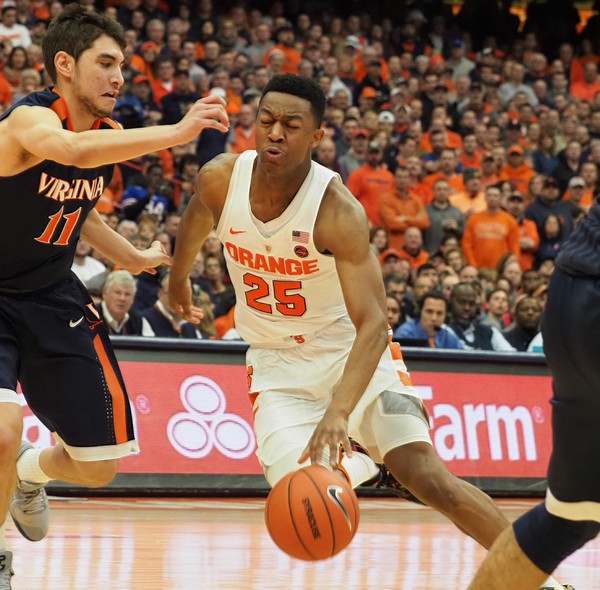
1-4 Press Breaker Options:
Option #1: 1-4 Alignment vs. Zone PressureCommon zone presses include the 2-2-1, 1-2-2, and 1-2-1-1 presses.
This alignment can be effective against any of these looks.
Consider the best way to use your personnel.
For example, do you want your point guard to receive the first pass, or would you rather he or she attack up the floor on the second pass?
In the diagrams below, notice how the offense maintains sideline, middle, reverse spacing.
In these diagrams, the fifth player is used in the “deep diagonal” position.
If the ball is reversed, players fill both sidelines and the middle.
Option #2: 1-4 Alignment vs. Man-to-Man PressureAgainst man pressure, you probably want to set screens to help your players get open.
This can be done in many ways, but one option is diagrammed below.
Again, players can be positioned however suits your team, but notice one important detail in the diagram:
Player 5, typically a post player, sets the second screen for Player 1, the point guard.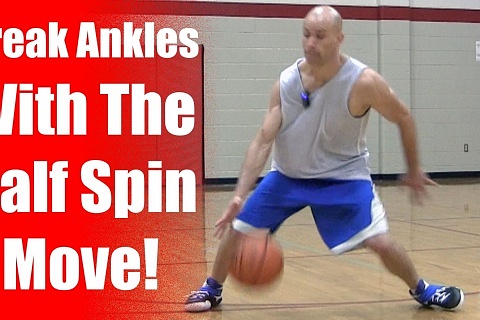
This is usually a good idea because two advantages could be created against a switching defense.
First, your point guard will usually be quicker than the opposing post player.
Second, your post player should be able to seal an opposing guard.
Another possibility is for Player 5 to screen his or her own defender, making the switch more difficult.
If the ball is inbounded to a good ball-handler, you can clear out of their way vs. a man-to-man defense.
Some defenses will not trap, instead choosing to pressure the ball handler 1-on-1.
If this is the case, your guard should not have trouble and it is better to give them space.
Some teams will let the ball handler start to dribble, then will leave from another player and trap. This is where the pullback dribble is necessary.
In the diagrams below, notice how, as the trap occurs, Player 1 uses a few pullback dribbles and the other teammates are “pulled” to the ball handler into the sideline, middle, reverse position.
Option #3: 1-4 Alignment vs. Extreme DenialTeams that completely sell-out to deny the inbound pass can be very difficult to play against.
While the second option can certainly be effective against these teams, you may want to have another option as well.
This look is good for teams that negate your screening actions with effective switching.
For example, athletic teams with five players of similar size and quickness may be able to switch without giving up significant size or speed disadvantages.
Against those teams, it may be smarter to maximize space rather than setting a lot of screens.
In the diagrams below, the defense is in a full court man-to-man face-guarding defense with the inbounder’s defender playing “centerfield.”
The offense counters by all four potential pass receivers walking their defenders as close to the baseline as possible. This shortens all passing options and creates even more space to operate.
Once the ball is inbounded, all offensive players should have an advantage.
The ball-handler can simply read the centerfielder and pass the ball ahead.
This is a great way to alleviate pressure by forcing the defense to become less aggressive.
8 Press Break Tips and Skills to Master:
a. Screen and Seal vs. DenialNo press breaker will be effective if you can’t inbound the ball safely.
If you’re facing a team that denies the inbound pass, you probably want to utilize screens to help free your ball-handlers.
However, your screeners MUST be ready to receive a pass after screening.
This is because many pressing defenses will switch all screens.
If a player screens a teammate’s defender, he or she should pivot in a way that keeps the switching defender on their back.
b. Screen Your Own Man vs. SwitchesAnother strategy against a switching defense is to screen your own defender.-Step-5.jpg/aid43486-v4-728px-Play-21-(Basketball)-Step-5.jpg)
Think about it...
If the defense wants to jump out and switch on all screening actions, screening your own defender makes it difficult for them to do that.
This type of screen can free a teammate to receive the ball.
c. Run the Baseline After MakesFinding a good inbounder is sometimes difficult.
One simple habit to teach your inbounders is to run the baseline after a made basket by your opponent.
If the strong side of the floor is not open, the inbounder can run to the other side to explore options there.
This shortens a potential pass to the opposite side.
d. Sideline, Middle, ReverseThis is a crucial part of attacking man or zone presses that like to trap.
Any time there is a trap, you want (1) sideline, (2) middle, and (3) reverse options.
Some coaches like the fifth player to be diagonal, while others prefer him or her to be deep.
Regardless, these first three options are essential.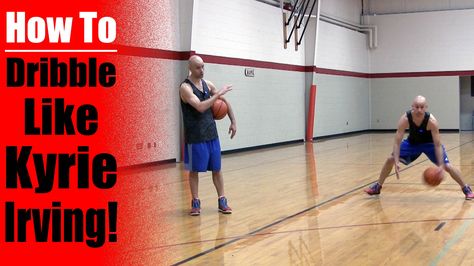
This is because it is very difficult for the defense to put two players on the ball while still covering sideline, middle, and reverse options.
With proper spacing, the player being trapped must simply remain poised and find the open teammate.
e. Use Ball FakesFull court presses are, by nature, aggressive defenses.
Jumpy defenders can be moved and manipulated with clever ball fakes.
If you want to pass to the middle, fake a pass up the sideline, or vice versa.
Ball fakes can take some of the aggression out of a defense.
f. Pullback Dribble vs. TrapsThis is the most important type of dribbling against trapping defenses.
Many man or zone presses attempt to bait the ball handler into dribbling before coming to trap.
This is fine.
Good players don’t mind being trapped because they know that traps create openings for the offense. However, you must create space to make those passes.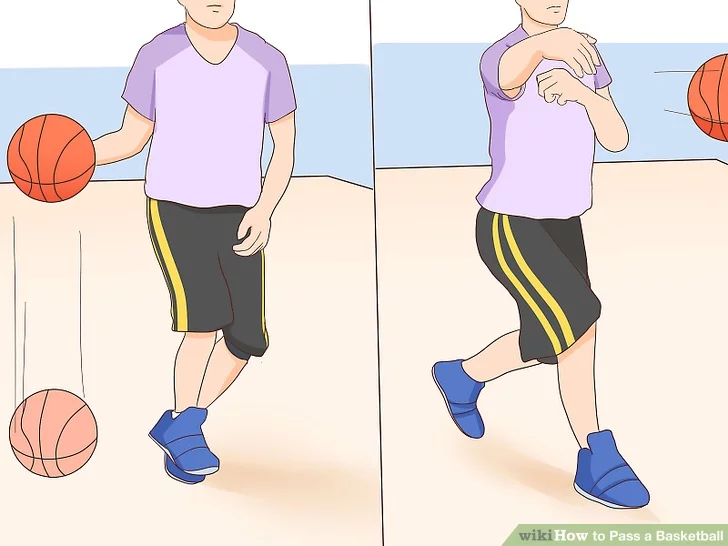
Pullback dribbles allow you to get that space.
Execute a pullback dribble by turning your shoulders so that the ball is behind you, putting your chin on your top shoulder so that you can see the floor, and taking big push steps back to create space.
As a ball handler uses a pullback dribble, his or her teammates should come back to the ball to shorten the pass. Think of it as the ball handler pulling teammates toward them.
Skilled ball handlers may be able to pullback and attack the other direction off the dribble (“pullback and reattack”), but most players will want to beat the press with the pass.
g. Play With Your Eyes UpThis sounds simple, but it is harder to execute when facing a double-team.
Players must be trained to maintain vision of the floor.
Most full court presses leave a player, sometimes multiple players, open down the floor.
The problem is that ball handlers panic and simply don’t see them.
Emphasize vision in practice and reinforce it through the use of film so that your players learn the importance of seeing what options are available.
h. Score Early or Late in the ClockTeach your players that the goal of press offense is to SCORE!
If you are content with simply getting the ball across half court and running offense each possession, there is no risk for the defense and they will just press more aggressively.
However, shot selection is crucial when playing against full court pressure.
Your first priority should be attacking the press for a layup.
If a layup (or a quality shot from a good shooter) does not materialize, then you can run your offense and seek a better shot.
Remember, many pressing teams want to speed you up.
If your press offense only creates quick long-range jump shots, you are probably playing right into the hands of the defense.
Conclusion:
At some point in your season, you will encounter a team with strong full court pressure.
Will your players be intimidated, or will they feel prepared to attack the defense for layups on the other end?
By emphasizing the proper skills, mindset, and alignments, you can prepare your team to excel in these high-pressure moments.
How to Break Any Type of Press & Avoid Turnovers
By Jeff Haefner
Home > Coaching > Basketball Offense > Basketball Press Offense: How to Break Any Type of Press and Avoid Turnovers -- Press Breaker Drills, Offense, and Strategy
In this report and supplemental video you will learn...
- How to attack any type of zone press (including the 1-2-1-1, 2-2-1, half court press, and more)
- How to reduce turnovers and take better care of the ball
- Drills to improve press breaking skills
- Press break drills to improve ballhandling under pressure
- Press break plays
- Tips for youth and advanced coaches
So you'll find a little something for everyone - all the way from beginner youth coaches to seasoned veterans.
Part 1 - PDF Download
Start with this PDF eBook (right click and select Save As to download)
Once you download the eBook you can print it out or view it on screen.
Part 2 - Supplemental Video
Once we get through the PDF ebook, watch this supplemental video:
Download the movie file (You may need to right-click the link and select "Save Target As")
Video Contents:
- Introduction
- 6 Keys to Beating the Press - 01:30
- How to Get the Ball Inbounds - 05:40
- Breaking a 1-2-1-1 Full Court Press - 07:50
- Breaking a Half Court 1-2-2 Press - 12:33
- Additional Tips - 16:30
- Final Thoughts - 23:10
Part 3 - Additional Press Break Resources
If you'd like to learn more about breaking pressure and see on-court demonstrations, we have a few DVDs that we recommend.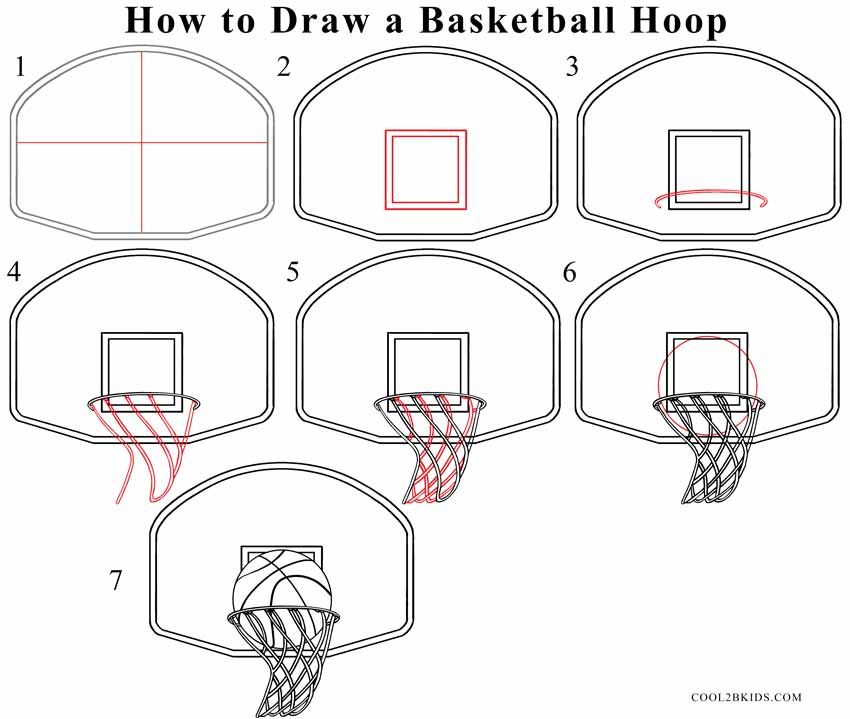
We found these resources by surveying our own subscriber list and asking them what press break DVDs they thought were the best. We then ordered the
DVDs and reviewed them to make sure they were good.
Now in all honesty we have not viewed every press breaker resource available. I'm sure there are other good ones out there. But these are a few that
were recommended to us by our subscribers and also get our seal of approval...
Universal System of Attacking Press - By Will Rey
- I like this DVD because it gives you a really simple and effective press breaker that works against any press. You'll pick up lots of good advice and I think this is an all around good DVD.
Mike Krzyzewski: Duke Basketball - Breaking the Press - This DVD gives you some additional tips, several good drills, and reinforces important press break concepts. It's also a good all around DVD.
Note for Youth Teams
If you're getting pressed in a youth league, my suggestion is to find a different league. Presses and traps are VERY counterproductive for youth
players and slow their skill development. Presses, traps, and zone defenses should be against the rules in youth basketball. If you don't believe me,
just listen to pro coach Stan Van Gundy (who also coached his kids' youth team):
http://www.youtube.com/watch?v=KZ9jTOAMTtk
You can also listen to former NBA player and youth basketball expert, Bob Bigelow:
http://www.youtube.com/watch?v=uy6LTXtz-60
Give Us Your Feedback
We really hope this report helps you successfully beat pressure and avoid turnovers.
Please leave your feedback below.
Laws of the genre. 5 Examples of Unexpected Evolution of the Rules Today, basketball is a multi-billion dollar industry, and the set of rules for the game itself will be heavier than Joyce's Ulysses and Tolstoy's War and Peace combined.
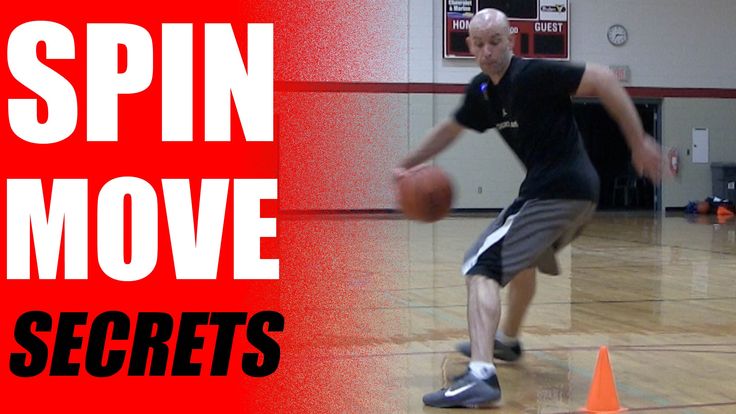
The first regulation was limited to only 13 laws (not surprising - it took James Naismith about 40 minutes to compile the original version), today it is more than 50 rules, flavored with all sorts of footnotes and clarifications, as well as a lot of nuances that in some cases contradict themselves.
Some of them you didn't even suspect, others the players themselves don't even know about, although they follow them one way or another. Today we will tell you about unusual cases related to the principles by which there is the best ball game in the world.
5) No Throws
The dunk is by far the most popular and spectacular element of basketball. While the basketball player casually overcomes the laws of gravity, the mesmerized spectators squeal with delight, and the team gains 2 points.
In the original interpretation, not only overhead throws, but even dribbling was considered a violation, and basketball was like a cross between dodgeball and American football.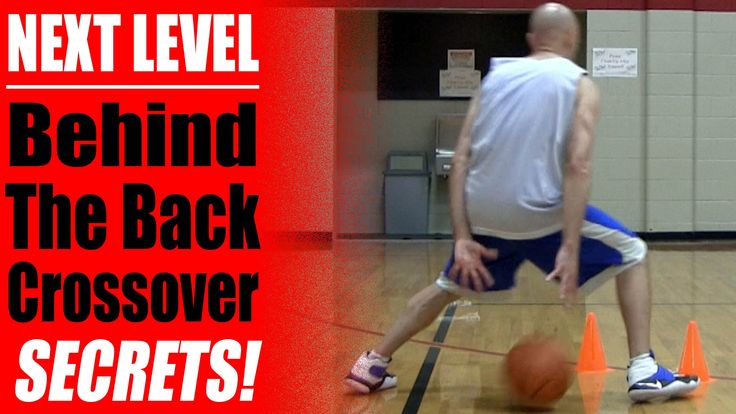 Only after years of evolution, to attract an audience and increase the attractiveness of the game, the rules were amended.
Only after years of evolution, to attract an audience and increase the attractiveness of the game, the rules were amended.
Nevertheless, in some places even today one can see the influence of antiquity. For example, in many high school leagues it is forbidden to hit from above during the pre-match warm-up. You can show off during the match, and if you have the strength and desire - after, but during the preparation - no, no. Disobedience is punishable by a technical foul, free kicks by the opposing team and an additional attack from their side. A loud "fi" and general censure will fall on the one who, out of vehemence, manages to strike from above and break the shield during the warm-up, in which case the team may even count a forfeit defeat.
So from now on, before you swagger in the warm-up, you can amuse your pride by remembering that for some this is an unaffordable luxury.
Photo: © Gettyimages/Fotobank.ru
4) Basketball hat-trick
points, assists and rebounds).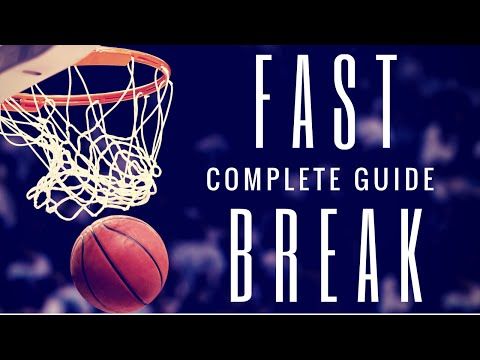 It's about how the principle of breaking free kicks functioned in the days of old Naismith. You should start with the fact that there were no penalties at all.
It's about how the principle of breaking free kicks functioned in the days of old Naismith. You should start with the fact that there were no penalties at all.
If one team committed three fouls before the opponent managed to foul at least once, the extra point went to the most disciplined team. Also, an additional bonus could fall if a player of one of the teams hit or kicked the ball, committed a rude and deliberate action against the opponent, and also pulled with putting the ball into play.
If a player received two fouls, then he was disqualified for the duration of his team's attack, and only then did he get the right to return to the game. Such a peculiar and slightly more humane version of the removal in football. By the way, the greats of the football world are now seriously considering introducing temporary disqualifications.
What to take from these retrogrades, the guys were a little more than half a century late, we already went through this in basketball.
3) From your own backboard to your own hoop - "non-shield"
How many times in NBA cuts have we been shown moments when a player scored into his own hoop, but if you think about it, in most situations it was the result of a stubborn struggle under the backboard. And this is precisely the only reason why such hits are counted.
In fact, in the NBA there is a rule according to which the ball scored into its own ring is not displayed in any way on the total score. Previously, in the early days of basketball, "own goals" happened in almost every match, and in order to reduce the number of mistakes and not turn the game into a big top, it was decided to change the rule.
The last major precedent regarding deliberately falling into one's ring occurred in 2009. New York Knicks NBA player Nate Robinson, deciding that the match ended in the last seconds of possession, threw the ball into the ring from the middle of the court. A funny nuance was that the ring was his own. And even though the hit was never counted, Robinson had to listen to a lot of interesting and informative things from his coach.
And even though the hit was never counted, Robinson had to listen to a lot of interesting and informative things from his coach.
2) Sports of real men
Photo: © Gettyimages/Fotobank.ru
It's no secret that basketball was originally conceived as an alternative to American football, which was difficult to play in the winter. It was with the idea of creating a much more practical and much safer sport that James Naismith set about creating his brainchild.
Basketball has undergone many changes, and today we can say that the original idea was only partially realized. The desire to change the rules in the name of increasing the pace and entertainment has led to the fact that in the United States basketball is the second most traumatic sport after the notorious American football. Bones, muscles, tendons crack, tear and break in basketball a little less than in America's most popular sport. So the hour is not equal, soon you will have to adopt innovations from hockey and equip basketball players.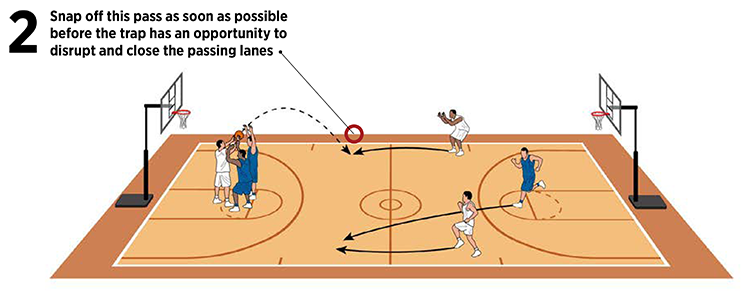
1) Taste and color…
Photo: © Gettyimages/Fotobank.ru
The most common and recognizable basketball symbol in the world is, of course, the orange ball. But initially they didn’t think much about the color of the projectile. Given that the role of basketball hoops was originally played by peach baskets, this is not surprising.
The first balls were analogues of ordinary footballs - brown, made of rough leather and tightened with tight lacing. They bore little resemblance to what modern balls look like. Over time, they began to experiment with coloring, painting balls in different colors of the rainbow. Rampant fantasies were pacified only at 1950th, when all the balls were brought to a common denominator, finally setting the standard sizes and colors. By the way, the orange color was chosen not only because of its brightness, but also as a kind of reference to the “fruity” past of basketball baskets.
The 5 Most Common Basketball Injuries and How to Prevent Them
We'll take a look at the types of injuries most common among basketball players according to the National Athletic Coaches Association report to see what the numbers can tell us.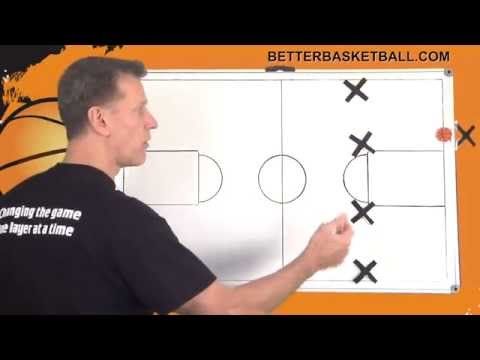 As with most sports, sprains, deformities, and common injuries are all the nasty things that can happen, but this information doesn't tell you the interesting details. Let's take a closer look at what injuries basketball players usually get and what to do to avoid them.
As with most sports, sprains, deformities, and common injuries are all the nasty things that can happen, but this information doesn't tell you the interesting details. Let's take a closer look at what injuries basketball players usually get and what to do to avoid them.
1. Foot/ankle injuries
As stated in the report, lower extremity injuries were the most common, with foot or ankle injuries considered to be the most serious problems. This could have happened after an ankle slip or an awkward jump after a ball. Also, the player can accidentally stumble. Naturally, basketball makes athletes more prone to this kind of injury.
Prevention: Ankle must be supported to prevent injury. Before entering the playground, make sure your shoes are suitable for this activity. Closed basketball shoes help prevent slipping on smooth playground surfaces. In general, a good pair of basketball shoes will create a higher profile and better ankle support.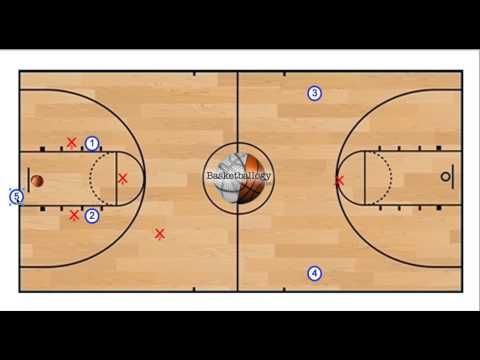 It will not be superfluous to tape the leg with a special tape to provide additional preventive measures. This method is recommended for people prone to ankle injuries.
It will not be superfluous to tape the leg with a special tape to provide additional preventive measures. This method is recommended for people prone to ankle injuries.
2. Hip and calf injuries
Spinning, running, jumping and bouncing put extra strain on the legs and hips, making players vulnerable to various kinds of injury. Hip sprains and bruises can occur from contact with the ground or from overstretching of the ligaments and muscles.
How to Prevent: Some contact injuries cannot be prevented, but there is no doubt that stretching has always been a good start to any workout or game. The more elastic your muscles and tendons are, the less likely you are to overstretch them and injure yourself while playing. Stretching your thighs is the key to warming up before a workout or game.
3. Knee Injuries
Severe injuries such as ACL tears are not common in basketball. But knee injuries, which are mostly minor sprains and deformities, still rank third on the list of the most common injuries in basketball.
Prevention: Strengthening the leg muscles will help create good support for the knees, so this is where going to the gym can really help. And, as mentioned above, never forget to stretch well before training and playing. If you know that you have problems with your knees, that you are prone to frequent injuries, it would be a good idea to put on a knee brace or fix a brace around your knee.
4. Wrist/Hand Injuries
In fact, it is surprising that these parts of the body are not the most vulnerable to injury, given that the game is played mainly with the hands. But according to the study, only about 11% of basketball injuries occur in the wrist, hand, or forearm.
How to prevent: keeping hands and wrists healthy and in good physical condition. Be sure to make sure that the ball goes straight into your hands when someone makes a strong pass to you. If you lose visual contact with the ball just before catching it, you can easily injure your fingers. Also, always be careful on the court and avoid clashes of the hands with other players. The less you deal with them, the better. Although, of course, in the context of basketball, this advice seems ridiculous.
Also, always be careful on the court and avoid clashes of the hands with other players. The less you deal with them, the better. Although, of course, in the context of basketball, this advice seems ridiculous.
5. Head/Face Injuries
When players hit their heads or an unintentional elbow to the face occurs, it's not funny at all. Hitting the ball in the face, of course, is less traumatic, but still unpleasant and also creates an awkward situation.
How to prevent: The most important task is to be able to recognize the symptoms of a concussion. There are no methods to avoid contact with the head, but if it does occur, you need to look at your condition and not miss the first symptoms. If there are even the slightest signs of a concussion, you should immediately seek help from a professional.
There is one more conclusion made after studying the report. It consists in the fact that approximately 60% of injuries occur in the second half of the game.